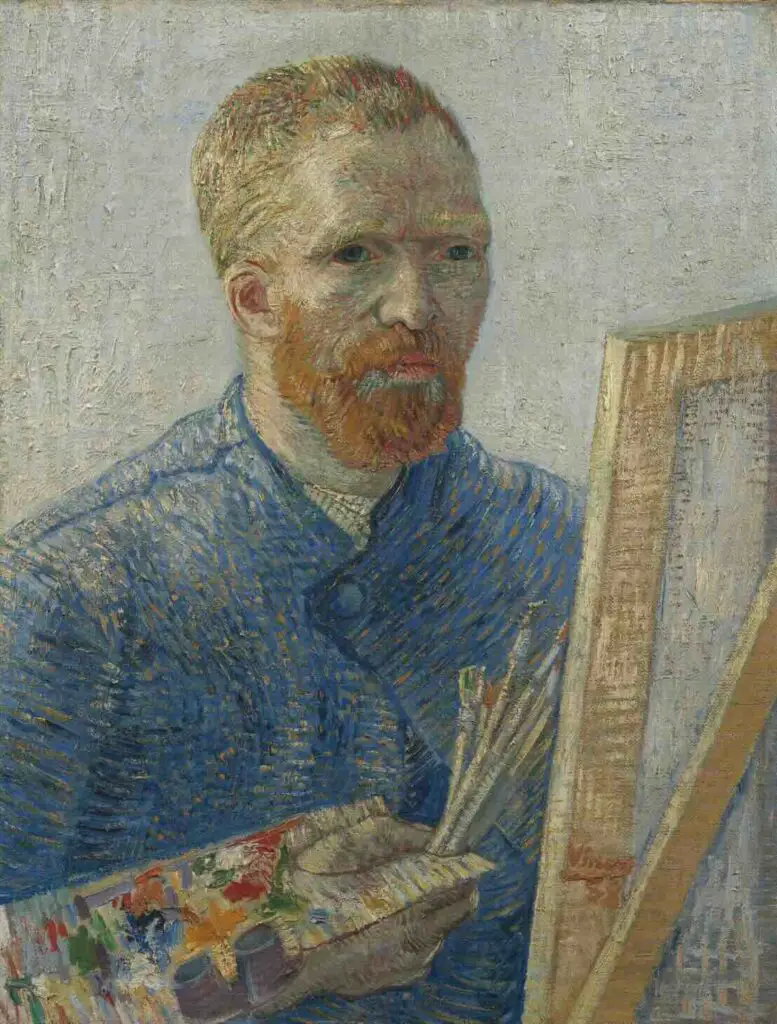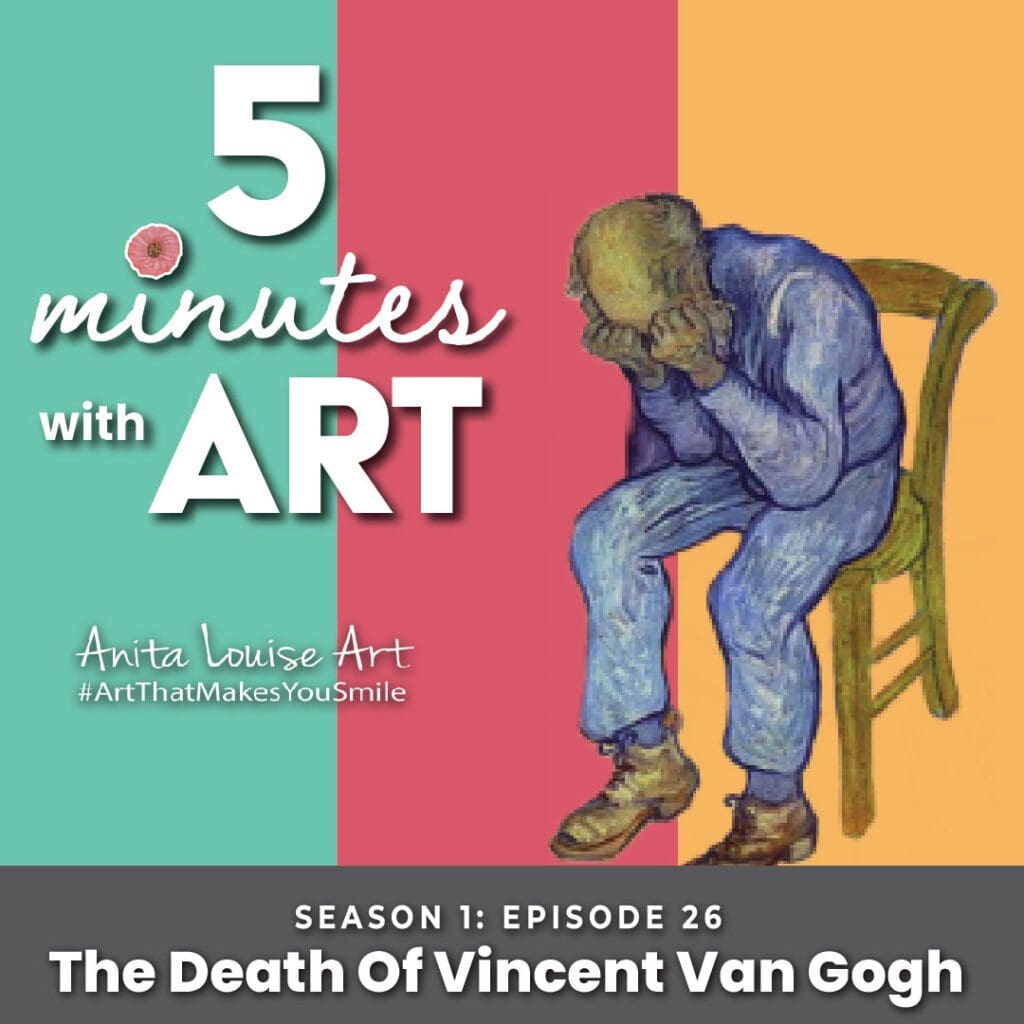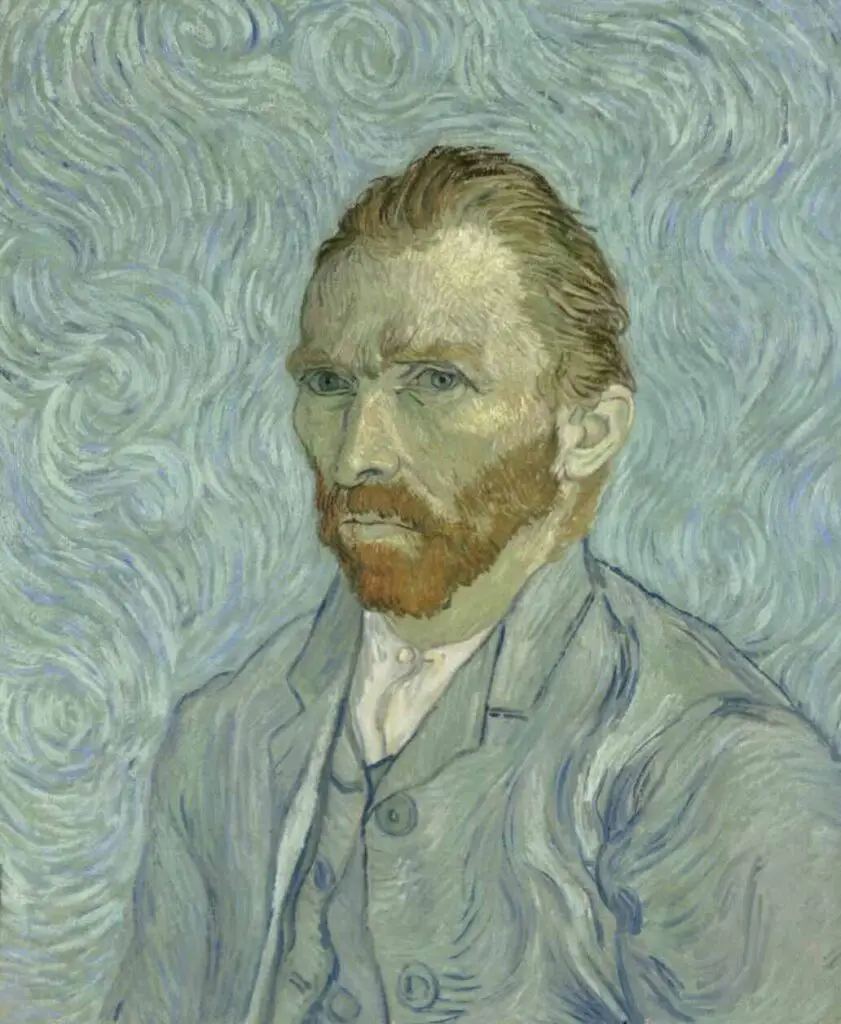Vincent van Gogh is one of the most well-known and influential artists. He is considered the most important Dutch artist since Rembrandt.
Vincent van Gogh was an extremely prolific artist who painted over 900 works of art during his short lifetime. His work is appealing, and his use of colors and brushstrokes help make his art genuinely unique. He inspired many art movements and artists; Van Gogh left us a legacy of his art, letters, and thoughts.
Table of Contents
- Van Gogh’s Art Work Is Appealing
- Van Gogh Had A Unique Brushwork And Style
- Van Gogh Used Appealing Colors
- Van Gogh Was A Prolific Artist
- Van Gogh Inspired Many Art Movements
- Van Gogh Inspired Many Artists That Went After Him
- Vincent Van Gogh Left Us A Legacy Of His Art
- We Have Van Gogh’s Written Word
- 10 Reasons We (And Others) Love Vincent Van Gogh and His Work
- Frequently Asked Questions
- Related Questions
There are many reasons why Vincent Van Gogh’s paintings continue to be highly sought after and significant paintings. Here are some of our top reason:
Van Gogh’s Art Work Is Appealing
Vincent Van Gogh’s artwork is visually appealing. His use of colors and his subject matter appeal to many different people. Even today, his work speaks to all kinds of people from all over the world.
Martin Bailey, the author of Starry Night: Van Gogh at the Asylum, wrote this about Vincent Van Gogh and his continued artistic appeal to the world.
He is an unusual combination of someone whose art has an instant appeal to people and a human interest story that is astonishing. You can see the enormous appetite for van Gogh growing certainly by the decade and almost by the year.”
Martin Bailey – New York Times
Getting any Van Gogh paintings on loan for an art museum, especially his most famous paintings, is not very easy. That is because Van Gogh and his artwork continue to appeal to many different audiences worldwide.

Van Gogh Had A Unique Brushwork And Style
Vincent Van Gogh also had a unique brushstroke and painting style. When you view many of his paintings up close, particularly Starry Night, you can see his use of intense brushstrokes that have dimensions to them.
Vincent Van Gogh, in a letter to his brother Theo, said this about these brushstrokes:
“I tell you, as regards work, my mind feels absolutely serene and the brushstrokes come to me and follow each other very logically.”
Vincent Van Gogh- Letter To Theo Van Gogh – 1890
Van Gogh Used Appealing Colors
Vincent Van Gogh used many appealing colors such as blues, greens, yellows, and blues. He was a master of bright colors.
So many of the colors he used appeal to us all. When I see his paintings and the colors, the paintings speak to me. I love all the colors he uses, such as yellows, greens, and blues.
Vincent Van Gogh’s typical colors included (but were not limited to): chrome yellow, cadmium yellow, chrome orange, vermillion, Prussian blue, ultramarine, lead white, zinc white, emerald green, and red lake, red ocher, raw sienna, and black.
Van Gogh Was A Prolific Artist
During his lifetime, Vincent Van Gogh was known to paint more than 900 paintings. He also produced many sketches and drawings.
Considering all the paintings and drawings, he created 4 or 5 paintings weekly. For any artist, that is a tremendous amount of output.
Van Gogh was not lazy, and he was anything put. He was an extremely hard worker and worked very hard at his art and painting.
Some people wonder why his artwork is still valuable if he painted so many paintings. The truth is that to be able to obtain a Vincent van Gogh painting today is extremely difficult. It is even challenging for museums to get the paintings on loan to show in their museum.
Van Gogh Inspired Many Art Movements
We know that Van Gogh sold very very paintings in his lifetime, but despite this, he continued to influence art and artists for a long time. His use of brushstrokes and contoured lines influenced many artists and art movements that went after him.
Van Gogh influenced essential art movements, including Expressionism, Fauvism, and early abstract art. For example, in the Expressionism art movement, the artist would try to emulate his use of bright colors and brushwork. They also like his color combinations.

Listen To Our Podcast About The Death Of Vincent Van Gogh by clicking here.
Van Gogh Inspired Many Artists That Went After Him
Vincent Van Gogh inspired many artists that went after him. In fact, after his untimely death in 1890, Henri Matisse and Paul Klee were two artists inspired by Van Gogh’s technique and style. In particular, Paul Klee started to shift towards using bright and robust colors.
Other artists that followed him and were inspired by him include Kirchner and Kandinsky; they were inspired by Van Gogh’s technique, choice of color, and dramatic brushstrokes.
Vincent Van Gogh Left Us A Legacy Of His Art
Vincent van Gogh left us a legacy of art. When he died, most of his collection was in the hands of his brother Theo. When his brother Theo died a short time later, his sister-in-law, Joanna, understood the importance of Vincent Van Gogh’s art.
Today a large portion of the collection can be seen in the Van Gogh Museum in Amsterdam, Holland. Joanna‘s son Vincent helped to ensure his uncle’s legacy by setting up an agreement with the Dutch government and Van Gogh’s foundation. Today we can all enjoy Vincent van Goghs artwork because of the foresight of these individuals.

We Have Van Gogh’s Written Word
Besides being a prolific artist, Vincent Van Gogh was a prolific writer of letters and postcards. In particular, he wrote many letters to his brother Theo.
Vincent Van Gogh’s sister-in-law Joanna understood these letters’ importance; she edited them and published a book of the letters between Vincent van Gogh and her late husband, Theo. These letters continue to give us an insight into Vincent Van Gogh and his life and death.
Vincent Van Gogh’s letters also give us great insight into his art. He has left us a legacy of not just his art but also the written word.
10 Reasons We (And Others) Love Vincent Van Gogh and His Work
Vincent Van Gogh remains an enduringly popular and beloved artist for many reasons, and here are ten that stand out:
- Emotional Depth: Van Gogh’s paintings are renowned for their emotional intensity. His use of color and brushwork conveys deep feelings, making his work profoundly relatable and moving.
- Unique Style: Van Gogh’s style is unmistakable. His bold, impasto brushstrokes and vibrant color palettes were groundbreaking and continue influencing artists today.
- Human Struggle: Van Gogh’s personal struggles, including mental health issues, are well-documented and add a human element to his art. Many find his resilience and dedication to art in the face of adversity inspiring.
- Innovative Techniques: He pioneered techniques and styles, experimenting with different brushstrokes, perspectives, and color schemes, which contributed significantly to the development of modern art.
- Iconic Works: Works like “Starry Night,” “Sunflowers,” and “The Potato Eaters” have become iconic, instantly recognizable even to those with a passing interest in art.
- Posthumous Fame: The story of Van Gogh’s lack of recognition during his lifetime, contrasted with his posthumous fame, is compelling and adds to the mystique surrounding his life and work.
- Connection with Nature: Van Gogh’s connection with nature and his ability to capture its essence in his work resonates with many who appreciate the outdoors and natural beauty.
- Influence on Art Movements: His influence on the Post-Impressionist movement and subsequent art styles has cemented his place as a key figure in art history.
- Wide Appeal: Van Gogh’s art appeals to a broad audience. His work is not just for art historians or connoisseurs but speaks to people from all walks of life.
- Timelessness: Despite being over a century old, his art feels timeless. It continues to be relevant, evoking emotions and admiration in the modern viewer just as it did in the past.
Anita Louise Art is dedicated to art education, great artists, and inspiring others to find and create their art. We love art that uplifts and inspires. #ArtToMakeYouSmile! #ArtToMakeYouHappy!
If you are interested to see any of my art, you can find out more by clicking here. If you are interested in what inspires me and my paintings, you can discover more by clicking here.
We have a free newsletter and would love you to be part of our community; you can subscribe to the newsletter by clicking here. I would be happy to talk to you if you have any questions. You can reach me, Anita, by clicking here.
Subscribe to our Anita Louise Art YouTube Channel with great videos and information by clicking here.
Join us for our podcast “5 Minutes With Art.” Spend just 5 minutes a week with us to discover and learn about great art and artists. You can find out more about our podcast by clicking here.
Frequently Asked Questions
Why are Vincent van Gogh’s paintings so highly valued?
Van Gogh’s paintings are highly valued for their emotional intensity, vibrant colors, and unique brushwork. His ability to convey deep emotions and create visually striking works has contributed to their enduring appeal.
How did Van Gogh’s life influence the value of his paintings?
Van Gogh’s tumultuous life, marked by mental health struggles and poverty, adds a layer of intrigue and complexity to his art. The narrative of his life often enhances the perceived value of his paintings.
What makes Van Gogh’s use of colors distinctive and valuable?
Van Gogh’s use of bold and expressive colors, often applied in thick, textured layers, is distinctive. His innovative color palette and techniques have influenced generations of artists and contribute to the uniqueness and value of his work.
How did Van Gogh’s influence on art movements impact the value of his paintings?
Van Gogh’s posthumous influence on Expressionism, Fauvism, and other art movements has elevated the significance of his work. Artists and art enthusiasts recognize his role as a pioneer, further increasing the value of his paintings.
What role do Van Gogh’s letters play in the value of his art?
Van Gogh’s letters provide insight into his thoughts, artistic process, and personal struggles. The connection between his words and his art creates a richer understanding, enhancing the historical and cultural value of his paintings.
How did Van Gogh’s short career impact the rarity and value of his paintings?
Van Gogh’s career lasted only about a decade, during which he produced a staggering number of works. The brevity of his career and the relatively limited number of surviving paintings contribute to the rarity and thus the value of each individual piece.
What role does Van Gogh’s influence on modern art play in the value of his paintings?
Van Gogh is often considered a precursor to modern art movements. His innovative approach to color and form has left a lasting impact, making his paintings highly sought after by collectors interested in the evolution of artistic styles.
How do the themes and subjects in Van Gogh’s paintings contribute to their value?
Van Gogh often depicted everyday life, landscapes, and portraits with a unique perspective. The relatability and universality of his themes, combined with his personal touch, contribute to the enduring appeal and value of his paintings.
Related Questions
What Art Tools Did Vincent Van Gogh Use?
Vincent Van Gogh used most of the essential tools that artists of his day used, such as oil paints, turpentine, oil, canvas, brushes, palette knife, and easel. We learn from some of his letters how he used these art tools for his paintings. We also know from the letters how essential these art tools were to him.
By clicking here, you can learn more by reading What Art Tools Did Vincent Van Gogh Use?.
Why Is Van Gogh Considered Such a Great Artist?
Many things make Vincent Van Gogh unique and great as an artist. He had a great way to use color in his heart, but more than that, he was an artist who set and paved the way, and his brushstroke technique used color and his design ability. What is interesting about all this he did this as a self-taught artist.
By clicking here, you can discover more by reading Why Is Van Gogh Considered Such a Great Artist?
How Much Is Van Gogh’s Starry Night Worth?
Van Gogh used color, form, and emotions in his art. He had a bright palette that was individualized for his time. Even though he did not see a lot of success during his life after he died, the impact of his art can be seen in both the Expressionism and Fauvism movements that were taking place in Europe.
By clicking here, you can learn more by reading How Much Is Van Gogh’s Starry Night Worth?, And Other Facts.


